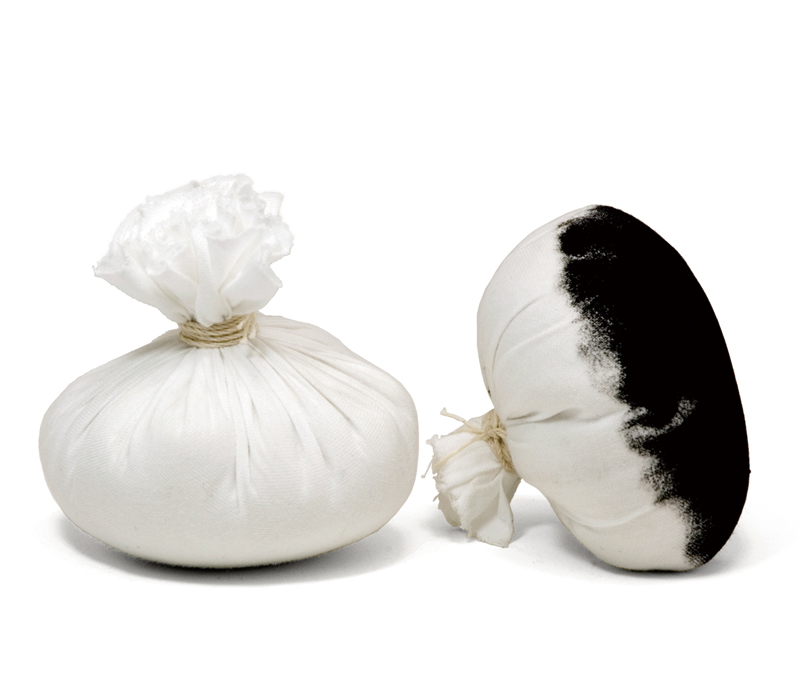Tanpo
たんぽ
Tanpo
CATEGORIES
A tanpo (Chinese: da bao) is a ball of cloth around which another cloth has been wrapped and then tied off at the top with a string, resembling a small pouch.
Primarily tanpo are used to apply ink in the process of taking rubbings (takuhon) of calligraphy carved into stelae, but with variations in shape and materials they are suitable for a variety of uses in woodblock printing and other print art. For example, wet rubbings (shittaku) are made when dampened paper is pressed against a surface and then is lightly tapped with a tanpo that has been dipped in ink (such as India ink, or oil-based ink) in order to transfer the relief sections (takuhon are one example of this technique). In the case of wet rubbings, the tanpo is filled with clean cloth fragments and is wrapped in cotton. When making a tanpo, if the outer cloth is not tied off in such a way as to ensure that the taut surface lacks any wrinkles, the tanpo may compress and in so doing fill the receded portions as well, resulting in an imperfect transfer. Also, if a coarse-weave cotton is used, the texture of the cotton will be transferred in the rubbing; for this reason, fine-weave cotton is preferable.
This sort of fabric tanpo may also be used in printing with mimeograph stencils. Tanpo are also used in copperplate printing, though in that case they are made from silk or deer hide. Silk tanpo are used for spreading solid hard ground (anti-corrosive), while deer hide tanpo are used for applying ink. The tanpo used for copperplate printing may be purchased in art supply stores that carry printmaking supplies.

